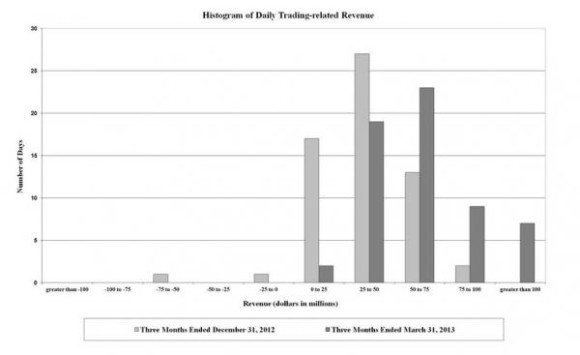I see this question more and more as indexing grows in popularity. People generally think that more indexing will make the markets function less efficiently . I don’t think this is true at all. Unfortunately, the question and its answers are usually shrouded in misunderstandings about how assets are priced and myths about what it means to invest “passively”. So, let’s think about this from an operational perspective.
At the most basic level much of this is a taxonomical error. For every passive investor there must be an active investor providing the liquidity that makes a passive index fund available. In the aggregate a market of stocks cannot be entirely active or passive. It is a blend of both. Referring to a market as either passive or active is like standing waist deep in water and referring to yourself as either wet or dry. You are, in aggregate, both! The same thing is true of any market. Therefore, at the most basic level, everyone cannot index because in order for an index to exist in the first place there must be sellers of stocks to make the index available.
At an even deeper level an “index fund” is not really an “index”. They are active portfolios structured in some relatively passive manner but managed every day trying to track an index. These funds are managed actively and involve hundreds if not thousands of trading decisions every year. The simplest example is the modern day ETF such as SPY which is essentially a real-time version of what most people think of as an index fund. When you buy shares in an ETF like SPY Standard and Poors is actively managing the allocation of funds and rebalancing the underlying holdings every day to keep it in line with its benchmark index allocation. All of this involves huge amounts of trading and counterparty activity. For instance, if the market price of an ETF were to deviate from the intraday indicative value then the market makers would either buy/sell the ETF or buy/sell the underlying securities. So, while there doesn’t appear to be much activity on the surface, the very act of buying an index fund could actually force some active management in the underlying securities markets. In other words, your “passive” investment is the other side of the active management of the market maker or fund administrator.¹
It’s not a coincidence that high frequency trading firms and big banks are making huge gobs of money during the rise of passive indexing. After all, passive indexing means that there is a greater need for those alternative forms of what is nothing more than “active” management. Unfortunately, the studies blasting active management usually include mutual fund managers and not the most active managers of them all – market makers and HFT firms. And make no mistake – these “active” operations are hugely profitable because they are essentially making “passive” portfolios available.²
The kicker here is that index funds really aren’t passive at all. When you look at the underlying components of how the funds are actually managed you realize that there’s a lot of activity in all of this. The fact that most index funds and ETFs are more tax and fee efficient than mutual funds does not mean they are necessarily less “active” though. It mostly means they pass on lower costs to their clients than most high fee mutual funds and hedge funds because they have economies of scale. People misuse the term “passive indexing” on a near daily basis now. Literally no one replicates a pre-fee and pre-tax index. Not a single investor. And your purchase and maintenance of a “passive” strategy will require a good deal of active upkeep or require someone else in the market to be active.
The bottom line is, most passive investing means there will be greater demand for active managers in the form of market makers and arbitrageurs. And since more active investors create the liquidity necessary to be an indexer then that means it is impossible for everyone to index. And that’s great because it’s a win win. Indexers get a low fee and easy way to access markets. But they also bear the cost of their laziness (in numerous unseen ways) which is why making markets in index funds is hugely profitable. So, if everyone indexed then that much more active market making would be required. End of story.
¹ – Read this fun paper on how ETFs work.
² – Eg, ever wonder how a big bank like Bank of America can be profitable on 100% of its trading days in a quarter? It’s thanks, in part, to passive indexers like me!
“During the three months ended March 31, 2013, positive trading-related revenue was recorded for 100 percent, or 60 trading days, of which 97 percent (58 days) were daily trading gains of over $25 million.”
Related: The Myth of Passive Investing
Mr. Roche is the Founder and Chief Investment Officer of Discipline Funds.Discipline Funds is a low fee financial advisory firm with a focus on helping people be more disciplined with their finances.
He is also the author of Pragmatic Capitalism: What Every Investor Needs to Understand About Money and Finance, Understanding the Modern Monetary System and Understanding Modern Portfolio Construction.


